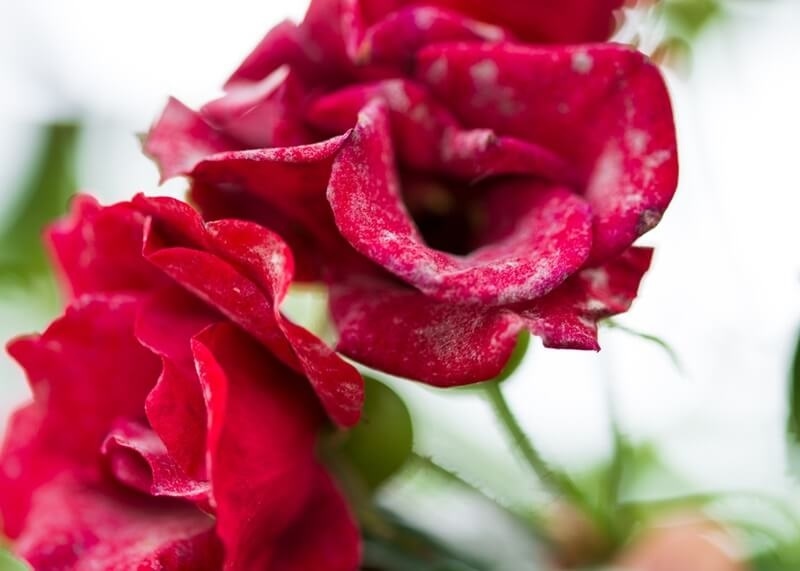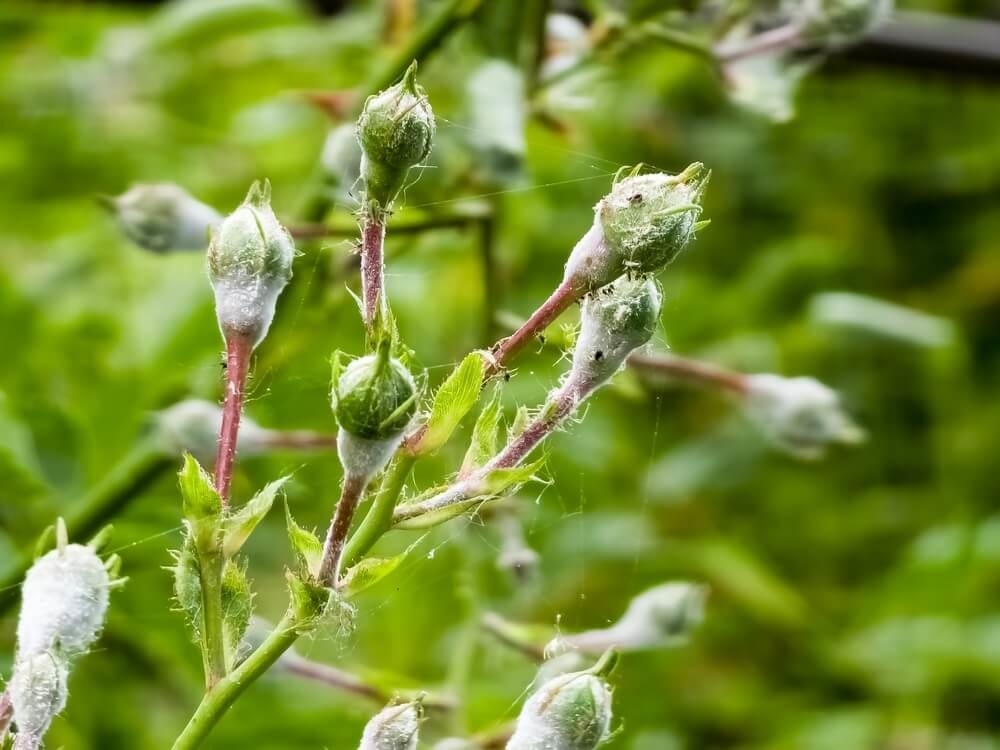
Powdery mildew is a fungal disease that infects a wide range of plants, including roses, vegetables, fruit trees, and ornamental flowers. It is recognized by its distinctive white, powdery coating on the surface of the plant's leaves and stems. Powdery mildew grows and spreads in warm, dry environments with poor air circulation. An untreated case of powdery mildew may weaken the affected plants, weaken flowering, and even cause premature leaf drop.
Knowing how to prevent powdery mildew on flowers and the associated best treatment options is valuable for promoting beautiful and healthy gardens. Generally, regardless of whether you prefer home treatment for powdery mildew or chemical treatment, recognizing and treating a powdery mildew infestation early and providing proper care are crucial for controlling a powdery mildew problem.

Detecting powdery mildew at an early stage is crucial in preventing its spread. Here are the most common leaf indications of mildew to look for:
Powdery mildew spores travel rapidly through the air, insects, and even garden tools, so once you see some of the symptoms, immediate powdery mildew treatment tips become essential.
Powdery mildew occurs under specific conditions, and understanding these conditions can help you develop effective prevention strategies. These conditions include:
By preventing these conditions, gardeners can significantly reduce the chance of infection and maintain healthier plants throughout the growing season.
In battling powdery mildew, prevention is always preferable to cure. Knowing how to prevent powdery mildew on flowers comes down to practicing good hygiene in your garden and using good management choices. Here are a few of the key prevention tips to follow:
Finally, routinely scouting plants and applying protective sprays promptly during the growing season should help reduce the likelihood of mildew becoming established.
Most gardeners prefer natural treatments before resorting to chemicals. Here are some great home remedies for powdery mildew, all easy to concoct from everyday household ingredients:
Mix one tablespoon of baking soda, ½ teaspoon of liquid soap, and 1 gallon of water. Spray on the affected plants once a week.
Mix 1 part milk with two parts water and spray infected leaves every 7-10 days. The proteins in the milk help inhibit fantastic growth.
More than just a highly effective fungicide, neem oil breaks the life cycle of the mildew spores. Mix according to the product label and spray on the top and bottom of leaves.
Mix 2-3 tablespoons of apple cider vinegar in a gallon of water and spray every few days to slow the spread of fungal spores.
Take these eco-friendly powdery mildew treatment tips to heart. The remedies, when applied correctly, are safe for most plants and form an effective first line of defense against infection.
Should natural remedies prove ineffective, the best fungicides for mildew are a viable alternative for controlling heavy infestations. Today's fungicide regimen is designed to prevent mildew, leaving flowers, vegetables, and ornamentals unaffected. Some commonly used fungicide options are
Always carefully read the label and any safety instructions, since overuse can damage plants or reduce efficacy. Alternate between the fungicides to prevent further development of the fungus.
Once you notice the signs of mildew on leaves, take these immediate actions to stop it from spreading:
Following these powdery mildew treatment tips consistently will help control the disease and promote faster plant recovery.
The choice between home remedies and commercial fungicides relies on how widely the infection has spread. For lighter cases of powdery mildew, home remedies such as milk or baking soda sprays may be adequate. However, if the disease has spread rapidly across multiple plants, the best fungicides for mildew should be fast-acting and long-lasting.
The best bet for success is usually to use both systems in combination—start with organic methods and then follow with a mild fungicide if further treatment is needed to ensure the disease has been eliminated.
Keeping powdery mildew away is not just managing it when it shows up—being consistent with your gardening habits and following seasonal maintenance tips will help proactively limit problems in the future:
Taking preventative measures will give you peace of mind, knowing that your flowers, vegetables, or shrubs can comfortably survive the entire gardening season without powdery mildew.
If you have been applying treatment for powdery mildew for several weeks without seeing any improvement or if a significant area of your garden has been affected, we suggest getting in touch with a horticulturist or a pest management professional, as they may identify another cause, such as poor soil drainage or incorrect fertilizing, which may be weakening your plants and leaving them open to infection.
Sometimes, you may notice that you keep getting reinfected with powdery mildew, which could indicate that some of your plants need to be replaced with more resistant varieties or moved to a sunnier section of the yard, allowing for better air circulation.
Powdery mildew may seem stubborn, but with prompt attention and the right approach, it can be effectively controlled. By combining how to prevent powdery mildew on flowers with the best fungicides for mildew and natural home remedies for powdery mildew, you can protect your plants from recurring infections and enjoy a thriving, beautiful garden all season long.
This content was created by AI